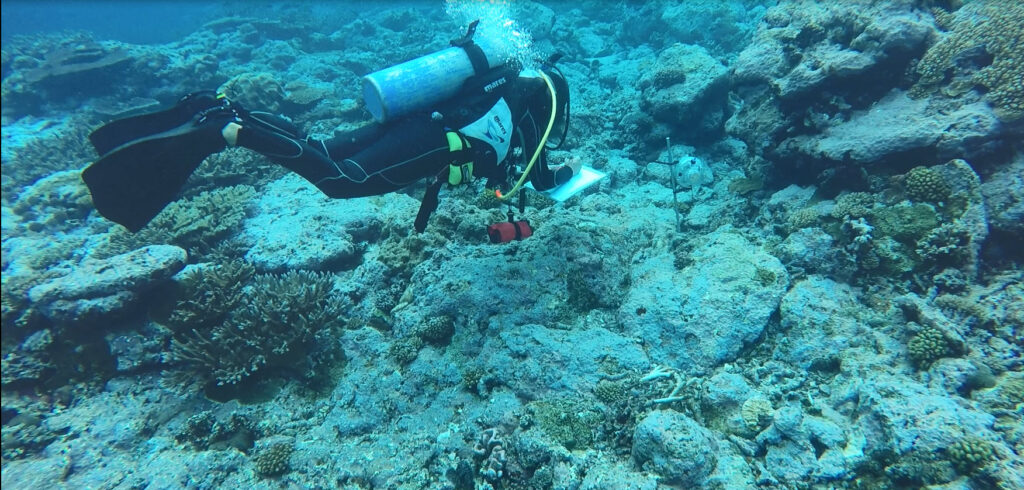We will determine the potential impacts of the Futiga dump site and landfill on the coral reef ecosystem resources of the Fagatele Bay unit of the National Marine Sanctuary of American Samoa. Leachate from the landfill could be having adverse effects on marine organisms, and a rigorous quantification of this threat would be useful in managing these valuable coastal resources.

Why We Care
There is currently minimal data describing the level of contamination in Fagatele Bay, a unit of the National Marine Sanctuary of American Samoa (NMSAS). Resource managers have concerns about the potential inputs of contaminants from a landfill upslope from the Bay. Leachate from the landfill may include both organic (e.g., PCBs) and inorganic (e.g., heavy metals) pollutants, and could reach the Bay through groundwater or surface runoff. The treatment of solid waste is a serious problem on most islands, and leakage of toxic substances due to inappropriate waste disposal can negatively impact the environment. It is currently unknown if the landfill above Fagatele Bay reduces the water quality in the bay through leakage of pollutants. The project will result in a baseline chemical characterization of the Fagatele Bay unit of NMSAS for over 100 contaminants in the water, as well as assessing sediment porewater toxicity, and using foraminifera assemblages as indicators of water quality.
What We Did
Passive samplers are useful for sampling compounds which do not accumulate in sediments or tissues, including many currently used pesticides or pharmaceuticals. Continuous Low-level Aquatic Monitoring (CLAM) devices use a small pump with a known flow rate to pass site water across a pre-prepared disc which adsorbs contaminants for subsequent analysis in the laboratory. An array of these sampling devices were deployed at eight sites to survey the presence and magnitude of contaminants in the Sanctuary.
Additionally, sediment porewater samples were collected for use in sea urchin toxicity assays which will provide a more holistic assessment (e.g., is sediment porewater toxic to invertebrates?) of the ecological status of the Sanctuary as it relates to land-based sources of pollution. The United States Environmental Protection Agency sea urchin embryo development assay will be used to test the toxicity of sediment porewaters.
Finally, sediments were sampled for subsequent determination of the foraminiferal assemblage. The FORAM Index (FI) uses characteristics of various taxa to assess whether water quality in an area supports coral reef development or recovery.
Benefits of Our Work
This project will assess the extent to which pollution in Fagatele Bay is a problem, and serve as a baseline to evaluate the effectiveness of future watershed management activities designed to improve coral reef ecosystem health and reduce land-based sources of pollution.
